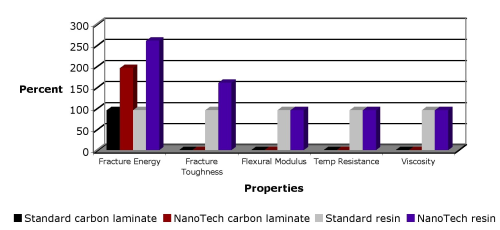

Huntsman maintains that its patented process facilitates the uniform incorporation of specific, dispersed organic sub-micron size particles into Araldite resins. As can be seen in the graph, this results in a significant improvement in fracture resistance without affecting physical properties such as flexural modulus, temperature resistance and viscosity. The rheological properties of Araldite Nanotech systems have been designed in order that they can be processed as easily as standard resin transfer moulding (RTM) systems.
According to Composites Busch, its manufacturing process, which is also patented, allows the production of the only true, one-piece composite hockey stick that has continuous fibre strengthening and no joints.
The process involves assembling carbon and glass braids around a polymer foam core and placing them into a matched mould. Then the Araldite NanoTech resin is injected to impregnate the braids.
Composites Busch argues that the one-piece design allows the energy released by the player to be delivered, smoothly, directly and more efficiently on to the puck. It also maintain that the new design and material combination provides the optimal balance in terms of flex, bend, stiffness and whip. In addition, it is claimed that the use of the Araldite NanoTech system allows the stick to withstand the frequent shock loads it will experience in a ice hockey match.
One of the first competitive outings for the new stick, which is marketed as the Nano IV, was at the recent World Ice Hockey Championships where it was used by members of the Swiss national team.





